Entertainment Weekly ran a story this past week about how Marvel was going to bring back the Ultimate Universe this coming June in a miniseries titled Ultimate Invasion from the creative team of Jonathan Hickman and Bryan Hitch. This news caught me completely off guard. Usually Marvel announces their big event comics well in advance at one of the major comic conventions to build up excitement for them throughout the year, so I was stunned to learn that a project of this magnitude was less than four months away without any details slipping out before now. If you were a teenager in the early-2000s reading comic books (me), then you were almost certainly excited by this news. If you had no previous history with the Ultimate Universe, then this news may have caused barely a blip on the radar for you.
So what the hell is the Ultimate Universe? It is probably best described as a publishing initiative from then-Marvel-President Bill Jemas to reboot the company’s most popular characters to day one of their creation. The idea was to make their flagship characters appealing to new readers without being steeped in decades of continuity. Editor-in-Chief Joe Quesada launched this initiative as an imprint separate from the main Marvel Universe so that current readers could continue reading stories set within the established continuity without having to worry about a reset. The first title that debuted in 2000 was Ultimate Spider-Man written by newcomer Brian Michael Bendis with art by longtime Amazing Spider-Man artist Mark Bagley. It was a modest success selling between 50,000 and 60,000 copies per issue throughout its first year. It followed a teenage Peter Parker becoming Spider-Man in a modern setting instead of in the 1960s. The second title to be launched later in 2000 was Ultimate X-Men written by another relative newcomer in Mark Millar with well established illustrators Adam and Andy Kubert supplying the artwork. Ultimate X-Men was a big hit from the start, and it regularly sold over 100,000 copies per issue on a monthly basis. That success continued throughout 2001, and Ultimate Spider-Man would also jump in sales with over 80,000 copies sold per issue that same year. The new imprint was officially a success. It was only a matter of time before the Avengers would get the Ultimate treatment themselves.
Before we get to the Avengers getting their Ultimate spin, let’s venture over to another imprint: WildStorm. WildStorm was the studio founded by Jim Lee when he co-founded Image Comics in 1992. When the comic book speculation bubble burst later in the 1990s, Lee would leave Image Comics and sell WildStorm to DC at the end of 1998 and begin launching titles in 1999 as an imprint owned by DC. One of those titles was The Authority written by Warren Ellis with art by Bryan Hitch. (Before discussing his contributions to the comic book medium, it should be noted that Warren Ellis has had numerous allegations made against him for sexual misconduct in recent years. You can read more about that here.) The Authority was essentially a critical examination of what a Justice League type of superhero team would be like in the real world without any kind of governmental oversight. Beyond just telling a more adult oriented superhero story, Ellis and Hitch strove to give The Authority a more realistic and cinematic experience than what comics had traditionally provided up to that point. In an interview, Ellis described what would go on to be coined as “widescreen comics.”
Property destruction on a massive scale. It's a superhero book gone widescreen, it's $200 million just on the special effects, it's a Jerry Bruckheimer production with script by Sylvester Stallone, Cecil B DeMille and Timothy Leary. It's as big and mad and beautiful as Bryan Hitch and I can make it. If teenagers need superhero comics, then this is what they should be like — pure bloody adrenaline, strange days, and big things blowing up. And why not?
These issues of The Authority would frequently use panel layouts that stretched across the page, replicating the widescreen aspect ratio you would see on a cinema screen. The artwork would feature incredibly detailed backgrounds with realistic looking characters on the page engaging in bombastic action sequences. This was a much different style than what was common throughout the 1990s from artists like Jim Lee, Todd McFarlane, Rob Liefeld, Joe Madureira, and others. Ellis and Hitch had a run on The Authority that lasted twelve issues and held steady selling over 30,000 copies per issue throughout the run. When they departed the series, they were replaced by the duo of Mark Millar and Frank Quitely. Millar and Quitely continued the “widescreen comics” style of their predecessors, but they would take the sex and violence of the series up a notch. In one arc that drew a fair amount of attention, the super-powered protagonists took on an opposing team called the Americans that were an obvious parody of the Avengers from DC’s competitors at Marvel. The Authority brutally massacre their rivals over the course of the three issue arc in gleefully over-the-top displays of violence. Though the series was still only selling around 30,000 copies per issue, it’s safe to say Marvel took notice because Millar was tabbed to write the Ultimate take on Avengers with original The Authority illustrator Bryan Hitch on art duties in 2002. “Widescreen comics” were coming to Marvel.
The series Millar and Hitch collaborated on became known as The Ultimates. It likely would have been called Ultimate Avengers to fit the naming convention of the previous series, but Kurt Busiek (the current Avengers writer at the time) has stated that he had threatened to leave the book if they launched an Ultimate Avengers book. His reasoning being that Marvel had brought in new creative teams for Amazing Spider-Man and New X-Men to coincide with the launches of Ultimate Spider-Man and Ultimate X-Men, and he didn’t want to experience a similar fate.

Regardless, The Ultimates launched with great fanfare in 2002 and immediately became the bestselling comic in the Ultimate Comics line with over 160,000 copies sold of the first issue and consistently selling around 110,000 copies of each subsequent issue in the first volume. The Ultimates was a series that was truly unique at Marvel and even among its fellow titles in the Ultimate Comics line. Millar reveled in the freedom to tell edgier stories featuring Marvel’s most classic characters by giving them different personalities and motivations from their main continuity counterparts. Steve Rogers was a more jingoistic and rigid figure, Tony Stark was a flamboyant playboy and womanizer, Thor was the leader of a hippy commune of environmental activists, Bruce Banner was a neurotic incel, Hank Pym was a self-absorbed manipulator and abuser, and Janet Van Dyne was a fashionista and celebrity (and secretly a mutant).
These were all deeply flawed people who would struggle to work together. The man responsible for putting the team together was Nick Fury. Unlike his Cold Warrior counterpart in the main Marvel Universe, Ultimate Nick Fury was a cool super spy who wore a long leather jacket and bore a strong resemblance to real life actor Samuel L. Jackson. He led the shadowy spy organization known as SHIELD, and his top two operatives were Natasha Romanov and Clint Barton (with Quicksilver and Scarlet Witch in support). The character designs for these characters by Hitch were meant to look more realistic than the typical spandex outfits superhero comics were known for. Tactical gear was used in lieu of completely form fitting costumes, and the characters had very unique and distinct facial features. These new designs were adopted for the Marvel Cinematic Universe for their early films in particular.
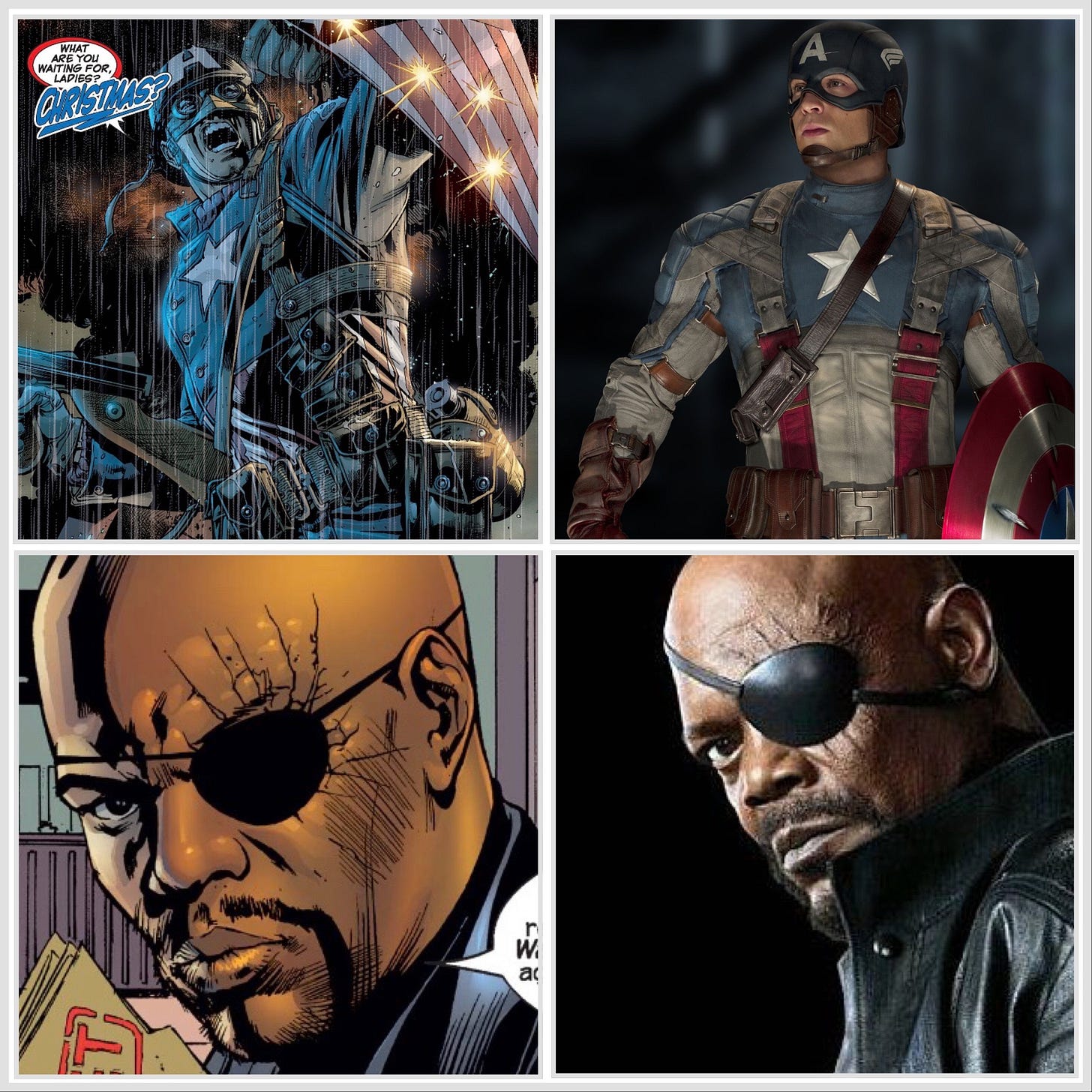
The plot of the first volume of The Ultimates may sound familiar. The series starts off with a flashback to World War II where Captain America is leading American soldiers into a Nazi base to prevent them from launching weapons of mass destruction aimed at the United States. Captain America succeeds in stopping the weapons, but he falls into the frigid waters of the Atlantic Ocean where he is presumed dead. In present day, Nick Fury is tasked with assembling a new super team at the behest of President George W. Bush (yes, they used the real president at the time in this universe) following the events of Ultimate X-Men when Magneto nearly killed Bush on national television on the White House lawn. How embarrassing. The team he assembles includes Hank Pym and Janet Van Dyne as lead scientific researchers (who double as Giant-Man and Wasp), billionaire playboy Tony Stark who has recently developed his Iron Man armor, Bruce Banner as essentially a backup scientist to Pym (he isn’t trusted from becoming the Hulk in a previous comic), and a recently thawed out Captain America who was found frozen in some ice. He attempts to recruit Thor as well (despite being unsure if he’s actually a god or just a lunatic with superpowers), but he is rebuffed. The first mission these new Ultimates go on is to bring in Bruce Banner who has become an even more dangerous version of the Hulk after mixing Captain America’s blood with his Hulk formula and injecting himself with it to give the Ultimates something to fight (bad plan).
Also, the Hulk is rampaging through New York City because his ex-girlfriend Betty is on a date with Freddie Prinze, Jr. No, I am not kidding. If there is one thing in particular that has not aged well in this comic, it’s the pop culture references. Another example of this is Tony Stark going on a date in a space station with Shannon Elizabeth. If you’re reading this and have no clue who Freddie Prinze, Jr. or Shannon Elizabeth are, then you have made my point. Anyway, the Ultimates do their best to bring the Hulk down, but it does not go smoothly. Hulk almost murders Giant-Man before Iron Man is able to stop him. Hulk then attempts to eat Tony (Ultimate Hulk is a cannibal), but he’s able to escape. Captain America uses a tank to try and slow him down, but Hulk ends up pulverizing the super soldier. Eventually Thor shows up to engage in a titanic battle with Hulk, but even he isn’t able to slow him down for long. Finally, the Wasp is able to shrink down and fly inside Hulk’s ear before zapping his brain and forcing him to turn back into Banner. It’s revealed later that Hulk’s rampage resulted in hundreds of deaths. What a mess.
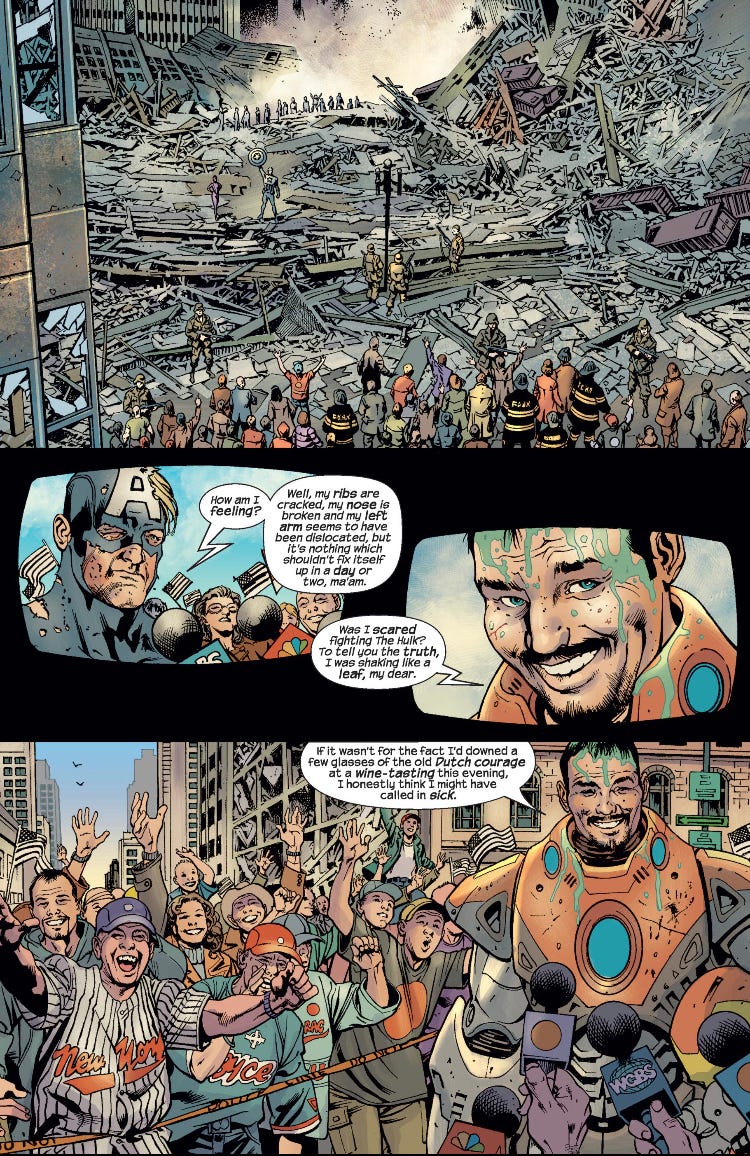
Massive trigger warning for The Ultimates #6. We are shown an extremely disturbing sequence of domestic abuse by Hank against Janet. I won’t dwell on this part of the series as it is not handled in a very tactful way. Needless to say, this is the part in the story in which the team is fractured. Captain America beats Hank to a pulp, and Hank is subsequently hospitalized. Janet is also hospitalized because of Hank. Bruce is in a containment cell. And Tony reveals he has an inoperable brain tumor. Meanwhile, Black Widow and Hawkeye finally get a chance to take center stage as they go on a mission to clear out an office building full of white collar workers. It seems like a strange mission until it’s revealed that this office is actually full of an invading alien species known as the Chitauri. Fun fact: the Chitauri did not exist in the main Marvel Universe at this point in time. They were created by Millar and Hitch specifically to be the antagonists in this story. It’s revealed that these aliens had been working with the Nazis during World War II and were the ones responsible for their advanced technology and weapons of mass destruction. The Ultimates (minus Janet, Bruce, and Hank) subsequently launch a covert assault to try and take out the Chitauri, but it turns out to be an ambush that seemingly kills everyone (I suspect they’ll be okay). In a cliffhanger moment, the leader of the Chitauri (disguised in human form looking exactly like actor Robert Carlyle) arrives to capture Janet. Not great.
It’s at this point that the Chitauri launch a full scale invasion of Earth. Fortunately, it is quickly revealed that our heroes have survived thanks to a force field in Tony’s armor. Now they’re ready for some payback. This is when the “widescreen comics” style goes into full effect. Iron Man and Thor are flying in the sky destroying Chitauri spaceships in huge double page spreads while Captain America is on the ground in a savage brawl with the leader of the Chitauri.
It is pure spectacle the likes of which you wouldn’t even expect to see on the big screen in 2003. Despite the gains being made by our heroes, the lead Chitauri seems virtually unstoppable. He’s able to survive wounds that would kill a normal man (shot in the head, cut in half, etc.), and he immediately regenerates and keeps fighting. Running out of options, Bruce Banner is taken out of his cell and airdropped into the middle of the action from an overhead aircraft. As one would expect, Banner turns into the Hulk and goes into smash mode. The arrogant Chitauri leader is unimpressed and begins to disparage and insult the Hulk. This was not a wise decision. An utterly enraged Hulk proceeds to pummel the alien to a pulp, decapitate him, and then finally eat him. Good lord.
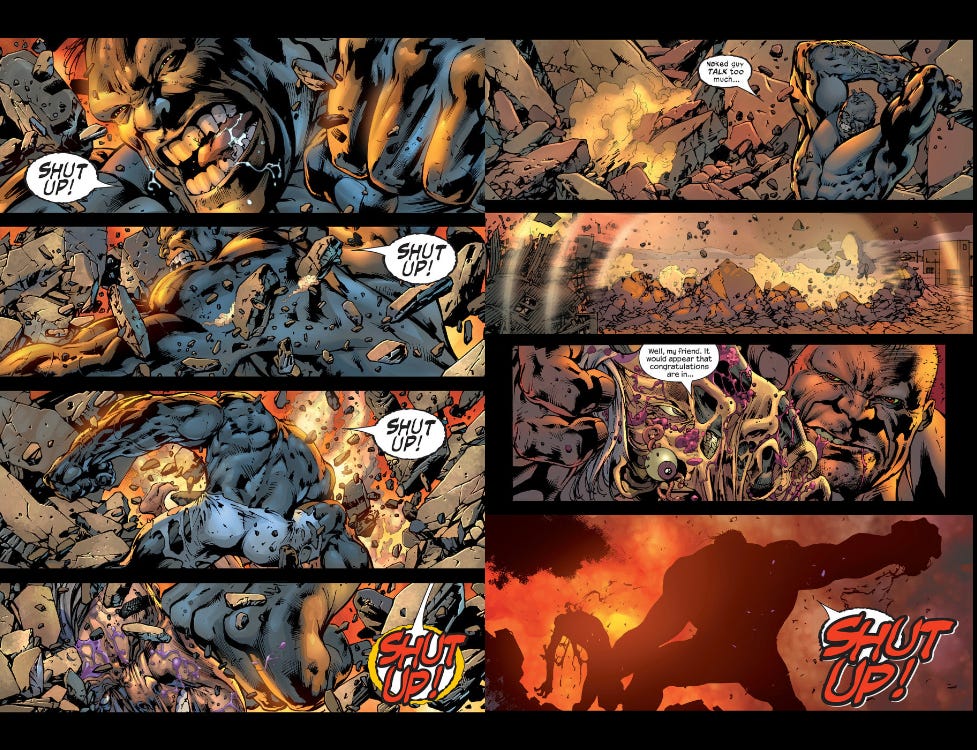
In the end, the heroes prevail and the world is saved. There are untold amounts of destruction and casualties, but Earth lives to fight another day. The massive success of this first volume of The Ultimates would lead to a second volume to be launched in 2004 from the same creative team of Millar and Hitch. While also successful, the second volume would end up plagued by delays that would lead the thirteen issue volume taking well over two years to finish. Despite these later difficulties, the first volume of The Ultimates would end up serving as the template for the first phase of the Marvel Cinematic Universe. The Robert Downey, Jr. portrayal of Tony Stark is much more in line with the Ultimate version of the character instead of the main Marvel continuity version. Captain America’s costumes and “man out of time” characterization in the movies are also heavily influenced by The Ultimates. Samuel L. Jackson’s Nick Fury is a one-for-one exact duplicate of the Nick Fury in The Ultimates. Lastly, numerous plot points and the overall story of The Avengers movie are lifted directly from The Ultimates. This becomes most evident in the final act when the Chitauri invade. The final few issues of the first volume of The Ultimates are dedicated to repelling a Chitauri invasion, and the heroes involved are identical to the ones in the movie aside from the inclusion of the Wasp in the comics. There is even a sequence in both the film and the comic in which Hulk pulverizes the arrogant leader of the invasion to comedic effect.
The comic is more cynical and violent than the film (the comic is meant to be a criticism of the Bush administration’s “War on Terror” policies), but the overall narrative is the same. To put it most bluntly, the most successful film franchise in cinema history likely would not exist if not for The Ultimates by Mark Millar and Bryan Hitch.
Next week we’ll take a look at the fall of the Ultimate Comics line and those who managed to build something special out of the ashes.


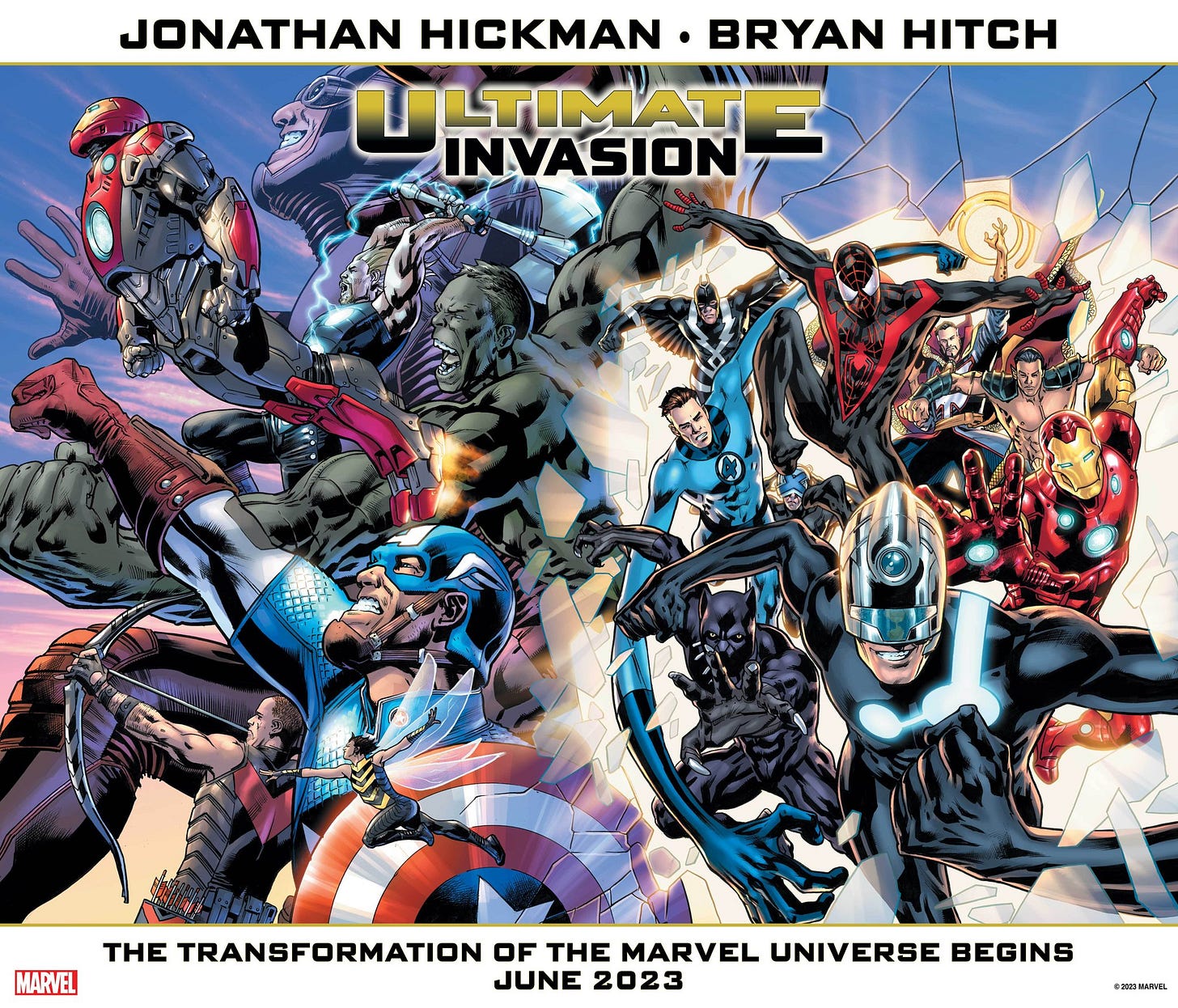
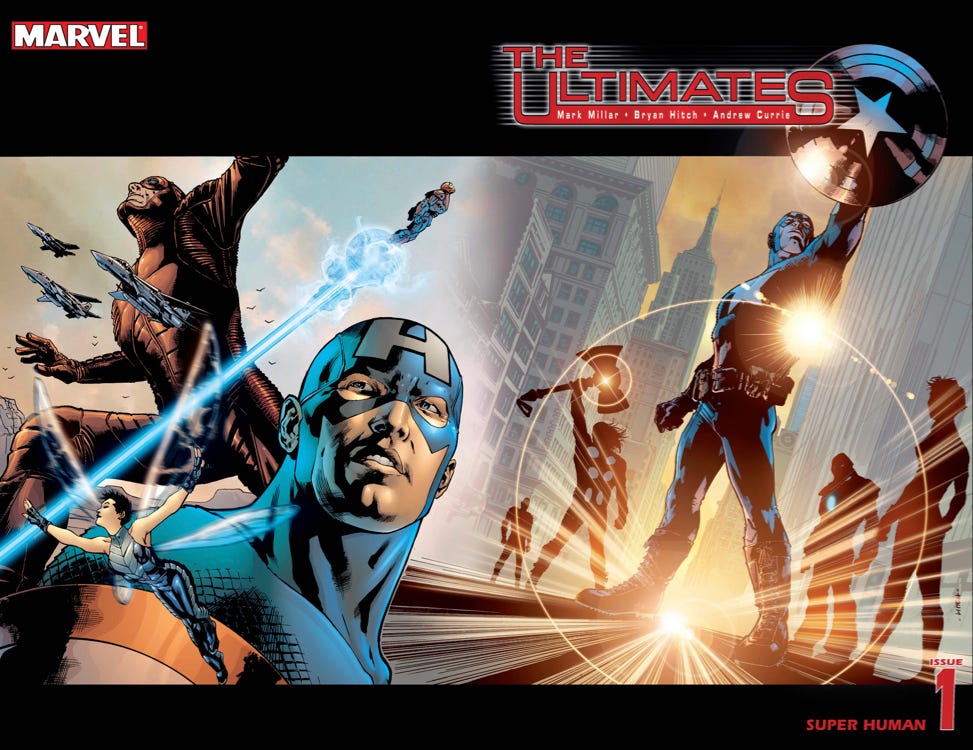
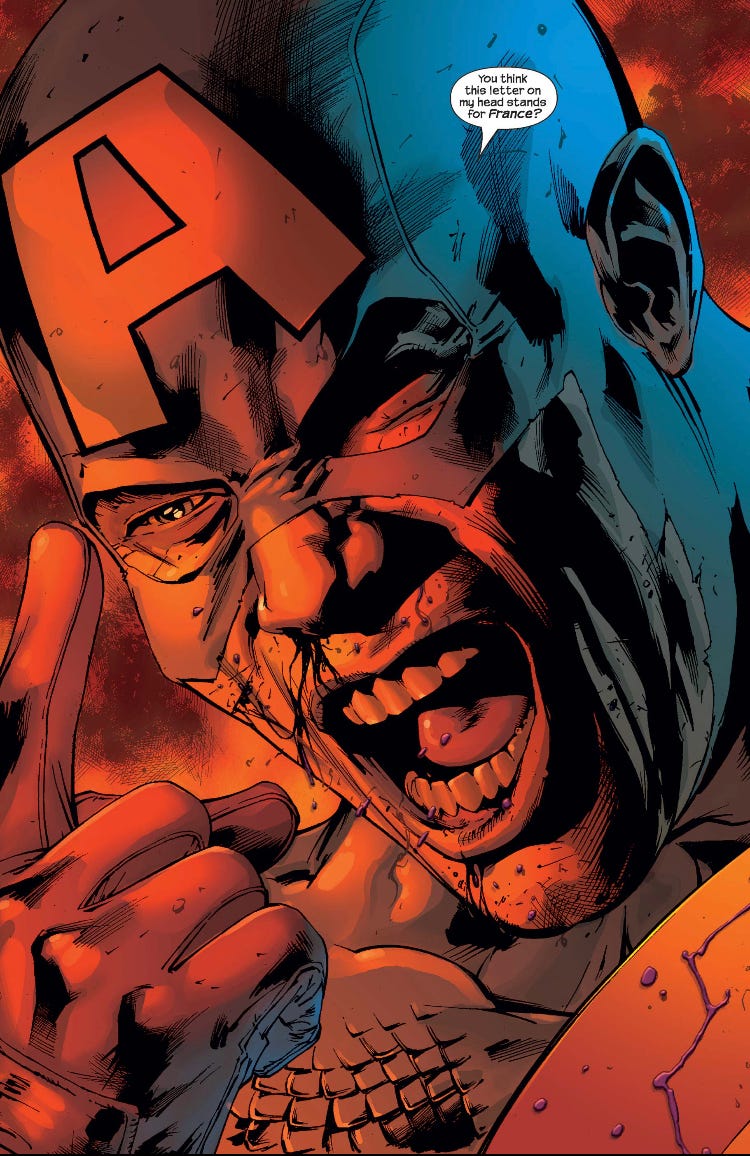
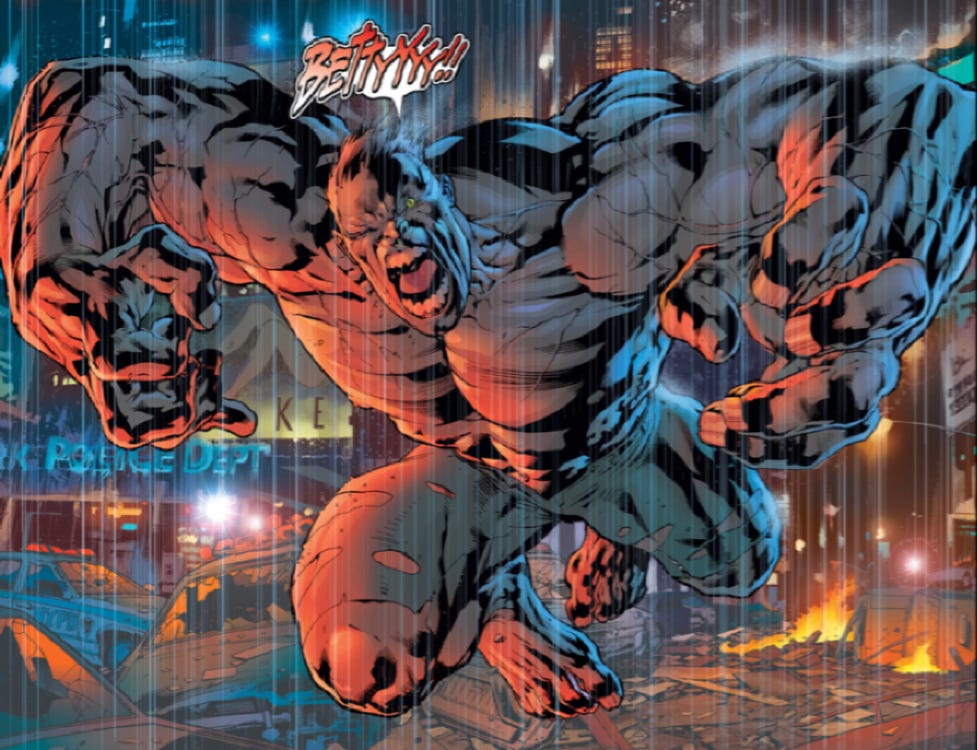
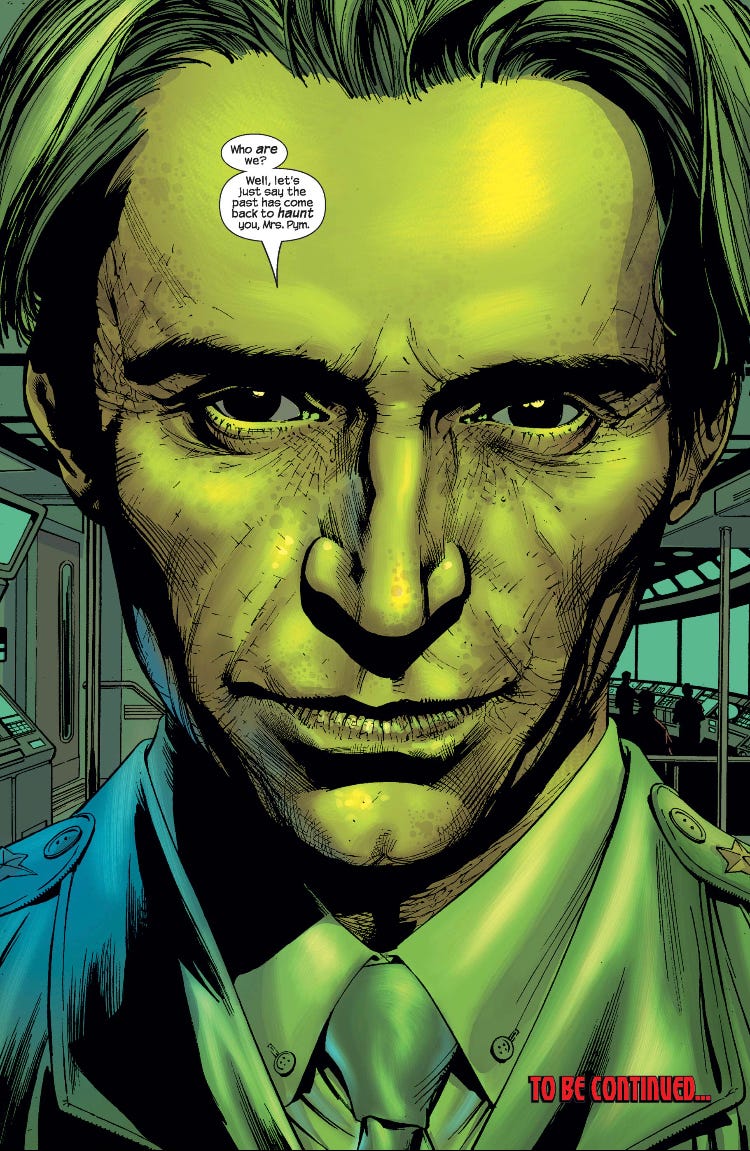
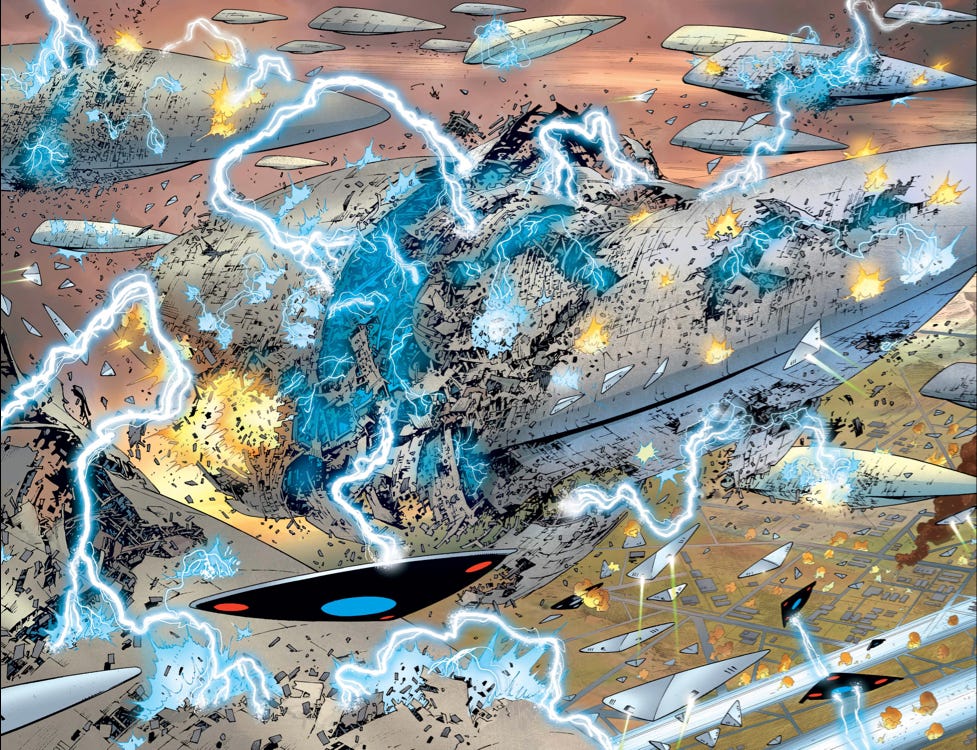
Always a joy reading your long form pieces!